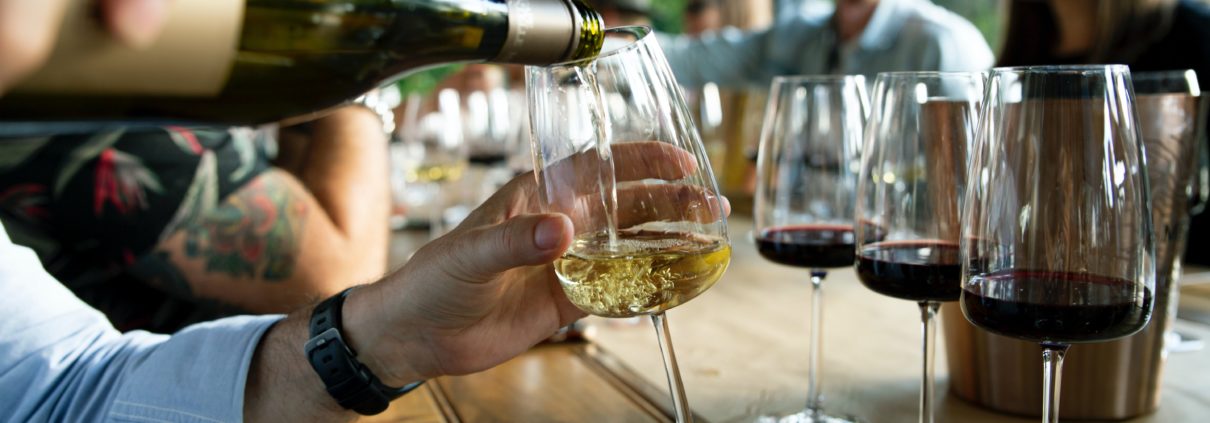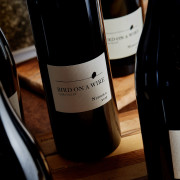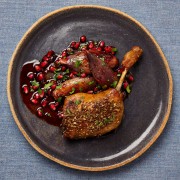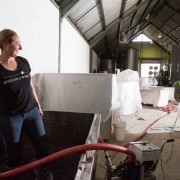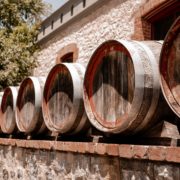Is It Good or Not?
With more than 10,000 different grape varieties in the world, wine is one of the most complex and yet, subjective product categories. With a history spanning thousands of years, many people have spent their lives studying the characteristics, flavours, styles and terroir of wine. And while it is one of the world’s favoured drops, the question still remains for many, what constitutes a ‘good’ wine?
Making your selection
Wine labels can be bright, pretty, modern, arty, busy or minimal, classic, plain or monochrome. What attracts our eye is as individual as to who we might fall in love with. How do you make a good wine selection when there are so many wines asking for our attention?
I always start with either the variety or the region as an initial guide. There is no hard and fast rule, but if you are not familiar or seeking out the wines of a particular maker, learning about what varieties perform best in each region is a great place to start.
Burgundy or Bourgogne is synonymous with classic chardonnay or pinot noir wines, Beaujolais with gamay, New Zealand with sauvignon blanc, the Rheingau with riesling and Margaret River with chardonnay and cabernet sauvignon. In the case of the Yarra Valley, we find many varieties perform well in the region, so it would be a case of style over variety. If you like big, robust, fruity flavours you might prefer a shiraz from the warm Barossa region. Or if you value, spice, subtlety, length and food-friendly, you might choose a Yarra Valley shiraz or syrah.
Getting to know your regions, can really help you to make better selections which do not rely on your label preference or gold medals on a bottle.
Honing your skills
As a winemaker, I’ve had plenty of practise honing my craft and evaluating wine. Like anything, learning to properly identify flavours and characteristics of wine takes time. While most of us can say, based on taste, what we do or don’t like, going beyond that takes a little more practise. Wine has more than 500 elements, which affect its flavour and structure, so assessing one from another can be a challenge. However, much like literature or art, there are tools you can use to break down what constitutes good from bad.
While greatly disputed amongst judges, winemakers and connoisseurs, there are several criteria you can call on to help your assessment. The colour of a wine, its smell, the taste and sensations on your palate, the length and aftertaste all contribute to the quality of a wine.
Learning to use your nose
As one of our five senses, smell is a key tool for you to use in the assessment of wine. Much can be identified from the aromas in wine and while our taste buds are limited to salty, sweet, bitter, sour and arguably umami, the human nose can identify thousands of unique scents.
The simple process of swirling your glass and inhaling for ten seconds can reveal a great deal about a wine. An off-putting odour tells you when a wine’s gone bad, yet a vanilla cedar smell tells the story of oak barrels for its storage. Like anything, it takes time to open your nose and identify the different aromas present, but with practice you’ll learn to identify a quality drop by its scent.
Studying the aroma can give you an initial fruit character, which allows you to identify the floral notes of riesling or the sharp smell of sauvignon blanc. The aroma typically reveals the grape variety but it can also provide you with information about the region and the winemaking. The more you smell wines, the more familiar you will become with these nuances.
A great tip is to start smelling more fruit, vegetables, nuts, spices and flowers too so you can start to equate these with the aromas you might pick up in wines.
Developing a palate
If you’re a wine enthusiast like myself, there’s nothing quite like the first sip of a newly opened bottle. But, how many of us truly take in all the aspects of what we’re drinking when pouring a glass of vino?
Like so many things in life, we begin to take this process for granted. That first sip becomes less and less special, until we forget to notice the flavours greeting our taste buds upon entry. Wine judges purse their lips and push the tongue forward so the wine moves to the front of the mouth. Opening the lips slightly and sucking while keeping the wine on the front of your tongue provides an aeration of the wine. This is a continuation of the aromatic process and can reveal certain faults, like the vinegar of acetic acid, oxidation or off-balance tannins.
As the wine moves further into your mouth, to the middle palate, it begins to reveal its flavour and composition. But your analysis doesn’t stop there, the next test relates to how long the flavour stays with you, this is called the ‘length’ of a wine.
Short wines leave the mouth very quickly with less impact and sustained flavour. This leads you to the final factor, the aftertaste. What flavours remain in your mouth, is it acidic, bitter or sweet? An out of balance wine can often be identified in the aftertaste and, likewise, a quality drop with extended flavour or ‘length’ can be found in this process.
While taste is essential in judging a wine, experts like James Halliday and Len Evans, argue the tongue itself cannot truly identify flavours without the help of the nose and I can attest to that. Wine must be appreciated with all the senses; smell, taste, sight and, even to a certain extent, sound – with the pop of champagne or uncorking of a fine red, sound can make wine experiential in the truest sense.
The verdict?
Ultimately, even with these tactics at hand, taste is highly subjective. What may seem wonderful to some will be undrinkable to others, despite a wine’s accolades or tasting notes. At a recent summit of the world’s leading chefs and scientists, Heston Blumenthal presented evidence the brain acts as a “gatekeeper” for our tastes, making millions of assumptions as we eat and drink.
So, by this argument, ‘good’ comes down to who we are, our past experiences and what we value. If a sip of your favourite wine elicits memories of seafood and a warm summer’s day or an open fire on winter’s eve, I see no greater reason to treasure it as a ‘good’ wine.
And if you’re ever unsure about whether a chardonnay, malbec or soave is for you, add the best food match, open it with friends to share thoughts about the smell, structure or flavour of the wine, or leave it open for a few days, sampling it each day to see how it might have changed.
When you’re next feeling a little explorative, try opening a new bottle of wine and employing some of these techniques, you never know what new and exciting flavours you might unveil. Will you learn to judge what is ‘good’? Perhaps not, but I guarantee you’ll have fun in the process.

